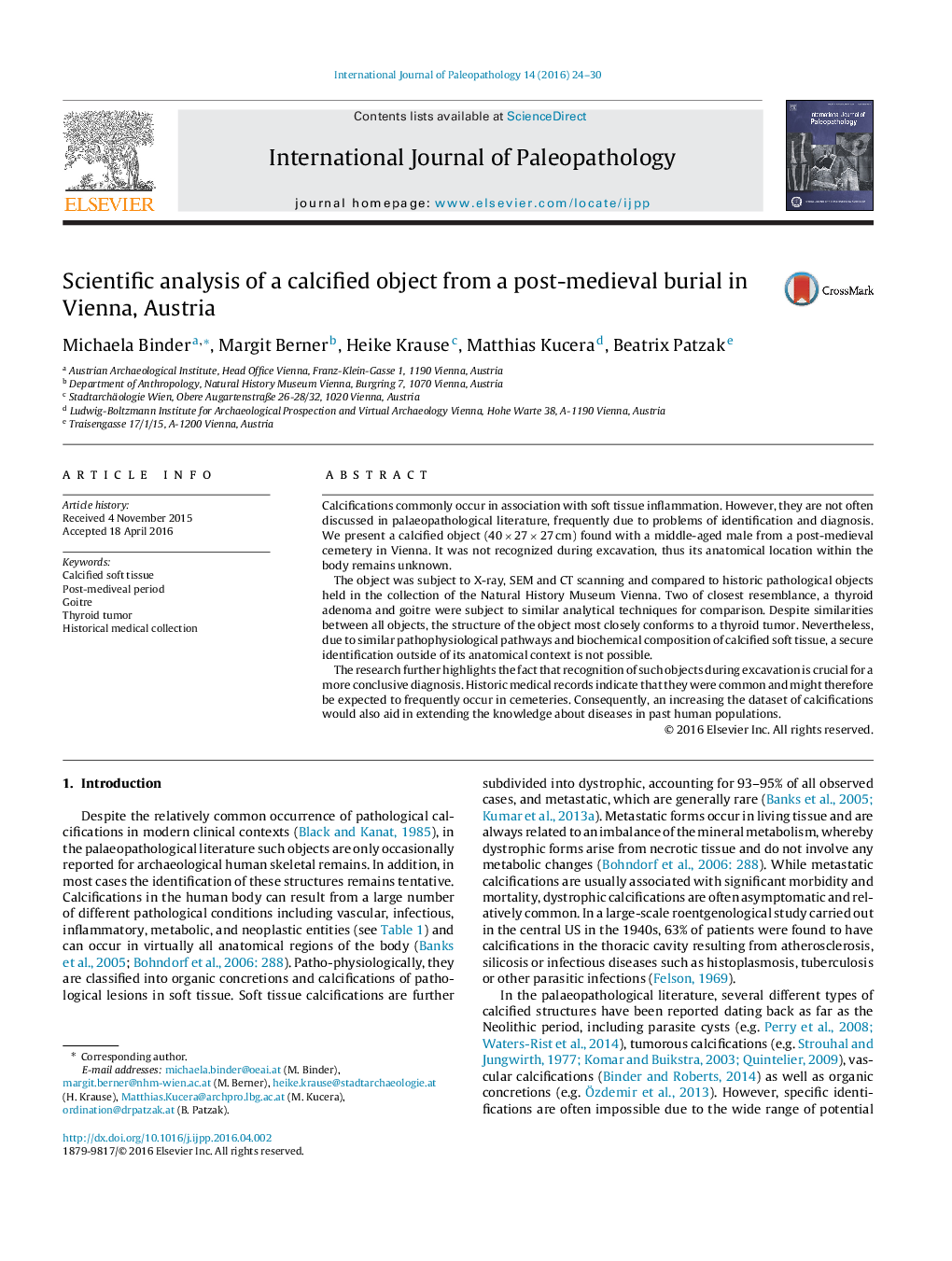| کد مقاله | کد نشریه | سال انتشار | مقاله انگلیسی | نسخه تمام متن |
|---|---|---|---|---|
| 101292 | 1422377 | 2016 | 7 صفحه PDF | دانلود رایگان |
Calcifications commonly occur in association with soft tissue inflammation. However, they are not often discussed in palaeopathological literature, frequently due to problems of identification and diagnosis. We present a calcified object (40 × 27 × 27 cm) found with a middle-aged male from a post-medieval cemetery in Vienna. It was not recognized during excavation, thus its anatomical location within the body remains unknown.The object was subject to X-ray, SEM and CT scanning and compared to historic pathological objects held in the collection of the Natural History Museum Vienna. Two of closest resemblance, a thyroid adenoma and goitre were subject to similar analytical techniques for comparison. Despite similarities between all objects, the structure of the object most closely conforms to a thyroid tumor. Nevertheless, due to similar pathophysiological pathways and biochemical composition of calcified soft tissue, a secure identification outside of its anatomical context is not possible.The research further highlights the fact that recognition of such objects during excavation is crucial for a more conclusive diagnosis. Historic medical records indicate that they were common and might therefore be expected to frequently occur in cemeteries. Consequently, an increasing the dataset of calcifications would also aid in extending the knowledge about diseases in past human populations.
Journal: International Journal of Paleopathology - Volume 14, September 2016, Pages 24–30
